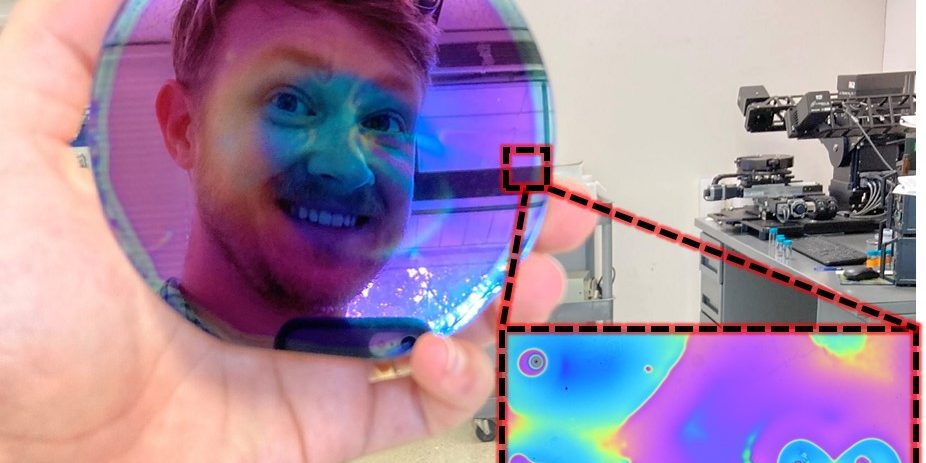VICKSBURG, Miss. — U.S. Army Engineer Research and Development Center (ERDC) researchers teamed up with researchers at the U.S. Army Combat Capabilities Development Command’s Army Research Laboratory (DEVCOM ARL) to develop the photonic integrated circuit (PIC), a new technology that captures and detects harmful water-borne contaminants in the environment.
The technology uses tiny beams of light to probe a glass-like surface smaller than a human hair. The team anticipates that ― due to the device’s microscopic size — one day millions of PIC sensors could fit on the corner of a smartphone to permit real-time reporting of contamination.
“Through high-impact publications and a conference presentation delivered by ERDC’s Drs. Gilbert Kosgei and Ashvin Fernando, our collaborators at DEVCOM ARL were able to get a sense of ERDC’s expertise,” ERDC Research Chemist Dr. Matthew Glasscott said. “We all saw an opportunity to integrate our materials with their instrument to detect contaminants within our military and civil mission spaces.”
By placing a thin binding material on the PIC’s surface, specific contaminants of interest can be captured and detected at parts-per-trillion concentrations. The powerful sensors permit the detection of a single drop of contamination in an Olympic-sized swimming pool.


